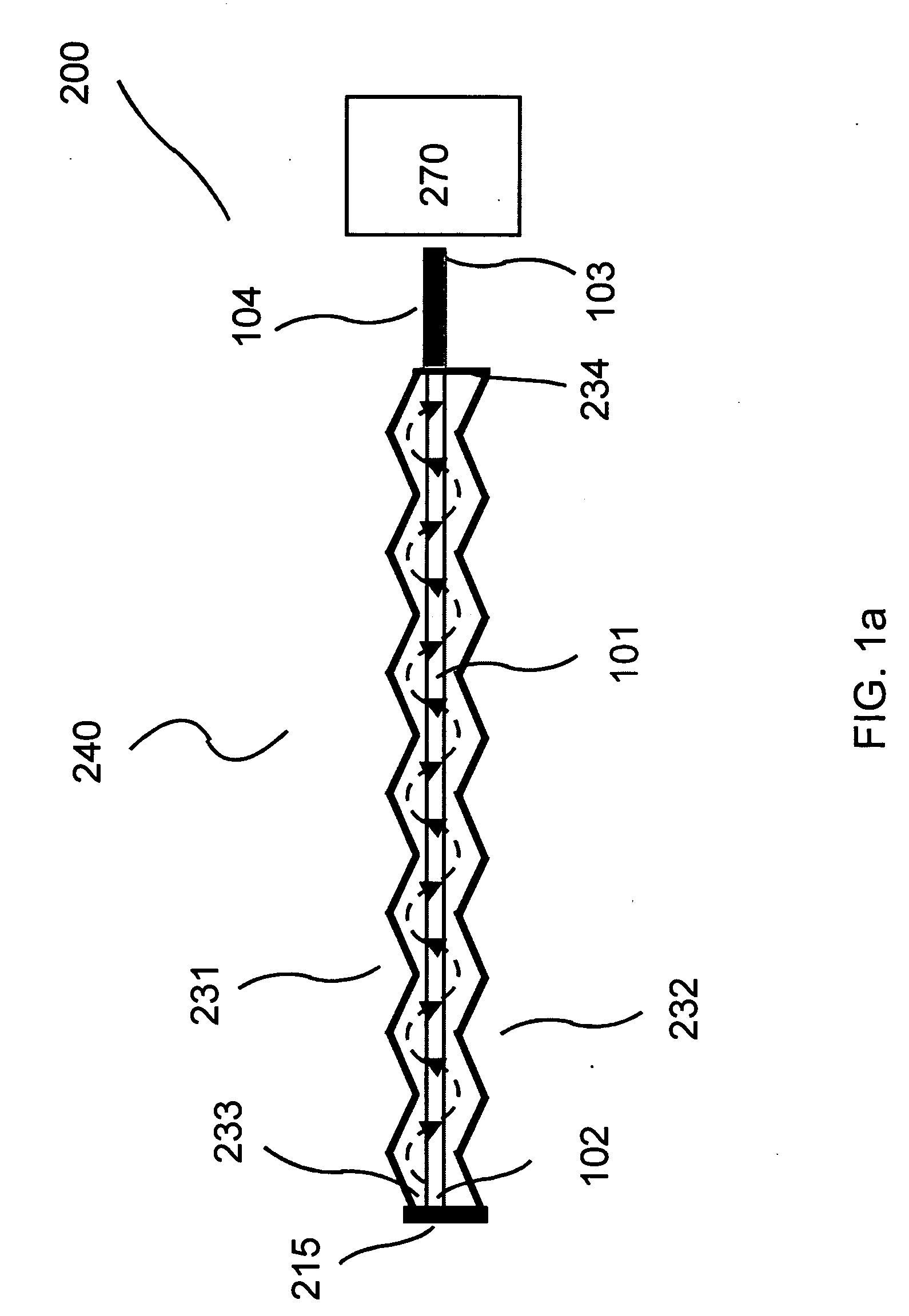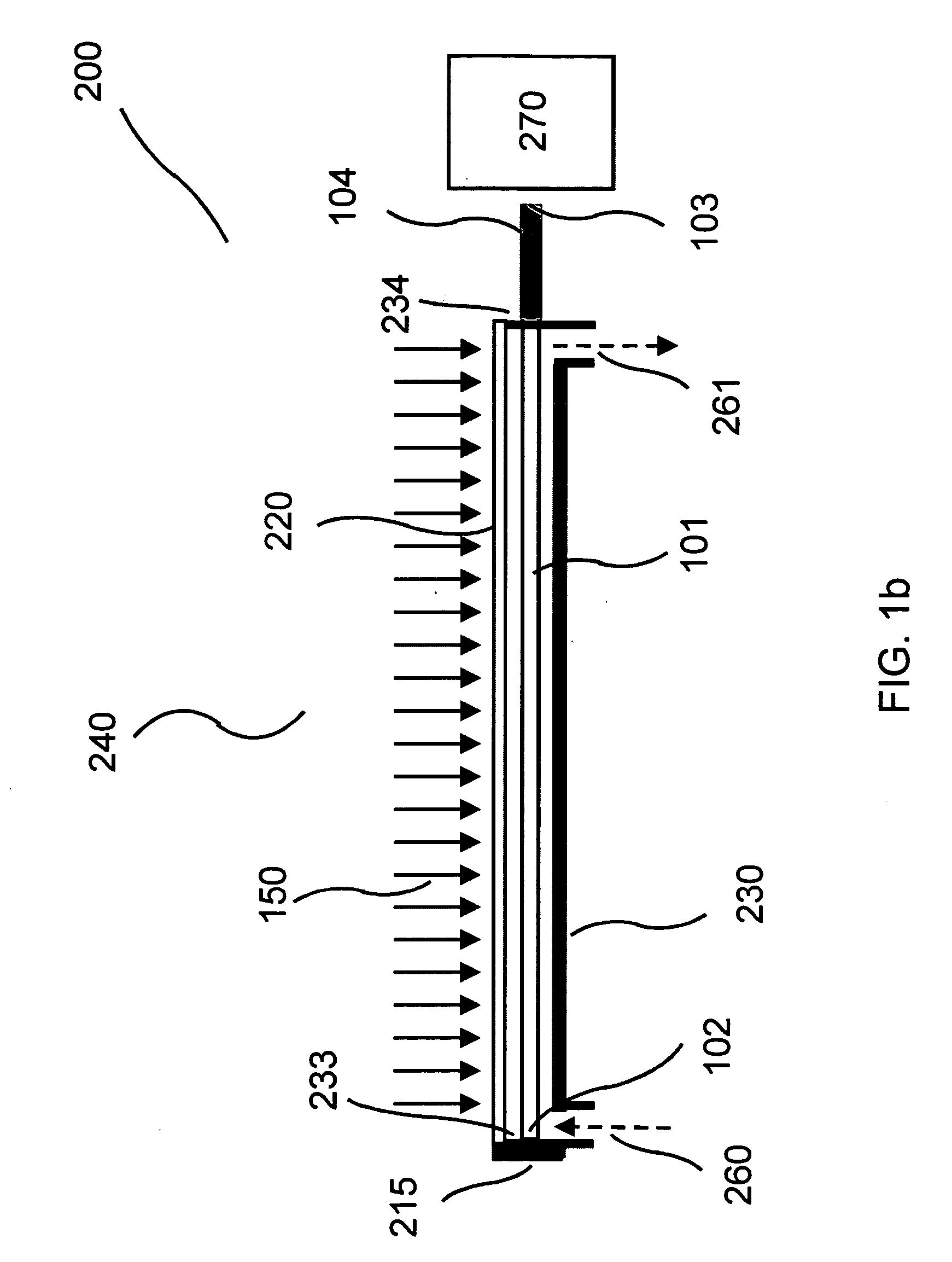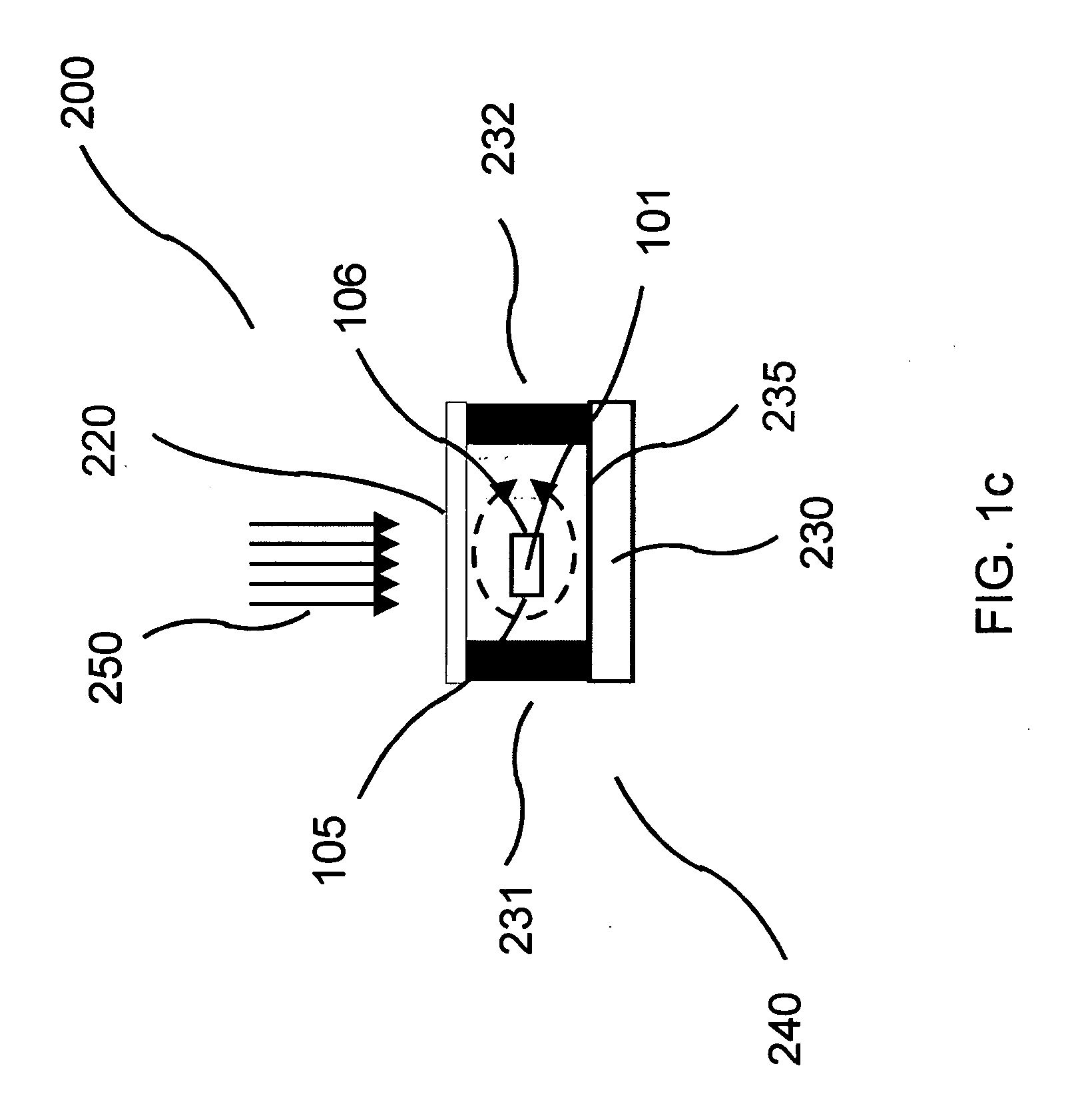Flow-through chemical and biological sensor
a flow-through chemical and biological sensor technology, applied in the field of optical sensors, can solve the problems of low detection efficiency, limited detection limit, and difficulty in detection of small amounts of analyte in a large volume of sample, and achieve the effect of higher index of refraction material
- Summary
- Abstract
- Description
- Claims
- Application Information
AI Technical Summary
Benefits of technology
Problems solved by technology
Method used
Image
Examples
Embodiment Construction
[0036] The invention provides a flow-through optical sensor wherein the interactions between the constitutive elements of the fluid and the waveguide surface are enhanced in order to maximize the capture of the analyte to the surface of the optical waveguide. Also provided is a sensor having at least one waveguide for each flow channel. Sensors of the invention are provided that allow for the detection of at least one analyte on each waveguide. Further, the invention also provides multiple channels and each channel with at least one waveguide as well as multiple waveguides in each channel. Illumination of the optical sensor and waveguide therein such as by excitation using radiation that is collimated or non-collimated, is also provided. The illumination of the waveguide can be coherent or incoherent. The illumination source can be a point source or a diffused source. Also provided is illumination of the optical sensor and waveguide therein such as by excitation using radiation that...
PUM
 Login to View More
Login to View More Abstract
Description
Claims
Application Information
 Login to View More
Login to View More - R&D
- Intellectual Property
- Life Sciences
- Materials
- Tech Scout
- Unparalleled Data Quality
- Higher Quality Content
- 60% Fewer Hallucinations
Browse by: Latest US Patents, China's latest patents, Technical Efficacy Thesaurus, Application Domain, Technology Topic, Popular Technical Reports.
© 2025 PatSnap. All rights reserved.Legal|Privacy policy|Modern Slavery Act Transparency Statement|Sitemap|About US| Contact US: help@patsnap.com



